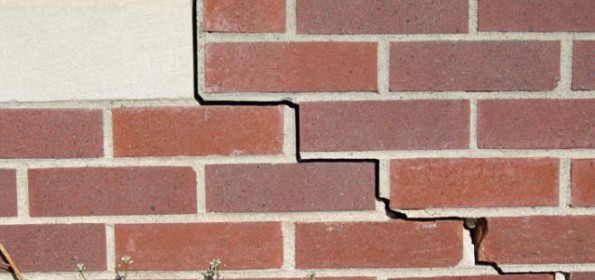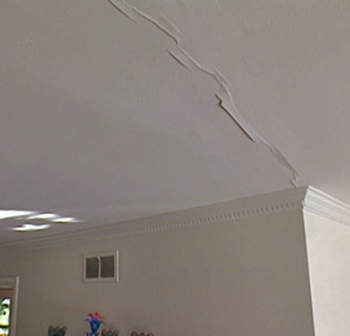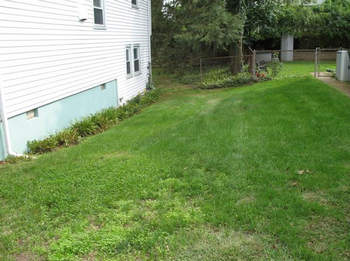
What Is Quality Construction?
A friend of mine put me on the spot when she asked me over to take a look at the new home she was looking to purchase. “I’m not sure what I should be looking for” she asked. “What is quality construction?”
For the price, sure, it was decent quality; it wasn’t in danger of collapse, the doorknobs weren’t falling off, and water wasn’t dripping through a leaky roof – but it wasn’t a showcase of construction skill either.

So I pointed out a few easily-fixed problems; missing bandboard insulation, some loose interior trim, bad grading at the back, and other sloppy-workmanship issues.
But I also couldn’t help but notice how remarkably different the quality of her home was from the small early twentieth-century homes that we are frequently invited to remodel; homes that are still standing after 70 or 80 years with many of their original finishes and fixtures intact.
And I wonder, will the houses we build today still be around, in good shape, and in demand 80 years from now?
It was pretty clear in my friend’s new home that quality can be measured in a number of ways. As we walked through the house she asked questions about soundness, longevity, and value – will my house stand up? Will it last a reasonably long time without constant repair? Is the construction worth what I paid for it?
Will My House Stand Up?
Most likely, yes. House collapses are very rare. But sagging, settling, cracking and buckling happen to homes every day. How much a home “moves”, and the effect it has on the soundness of the structure, are signs of quality.
A quick inspection can give you some clues about the quality of the home’s structure. Check the windows and doors; do they open and close easily? Sticking windows and doors are sometimes a sign of movement in the structure caused by settling.

Cracks in the drywall ceilings and walls anywhere in the house are also a sign of excessive movement of the house frame – don’t assume a little patching and painting will cover it up!
The basement or foundation walls should always be dry, plumb, and free of cracks over 1/16” wide. Some hairline cracks are normal (especially in poured concrete walls), but cracks that you can’t paint over are a sign of bad drainage, poor waterproofing, or bad soil.
Look for two different kinds of foundation cracks – long horizontal cracks are a sign of water problems outside the house; diagonal cracks, or cracks that follow the pattern of mortar joints in concrete block, indicate soil settling under the house.
Will My House Need Constant Repair?
As a homeowner you expect to spend a little time on routine repairs, but a good quality new home shouldn’t require much. Look carefully at any home you’re considering for signs that you’ll be spending your weekends trying to keep up with it.
Water is the enemy of every house. Much of the effort of design and construction is directed towards keeping water out. When it gets in, it causes all sorts of trouble that will beg you for constant attention and repair.

Water can leak in through the foundation (see above), but just as often it leaks in around openings – doors, windows, vents, and so forth. All of these components require an additional material called “flashing” to direct water away, but it isn’t always installed correctly (if at all). Make sure your home inspector checks for proper flashing.
Cheap construction will show up first in places that get used most – doors, faucets, closet shelving, and flooring are especially vulnerable. “Hollow core” doors will save a few bucks over solid core doors, but hollow doors won’t take a beating from kids and pets. And there’s no patching a hollow door should an errant golf club make a divot in one (ask my Mom about this).
Plumbing fixtures are the same way – cheap chrome-plated faucets with hollow handles will wear out quickly, and are not as easy to replace as the home-improvement stores would have you believe.
Exterior doors should be clad on the outside to protect the wood frame from weather damage, and entry doors should be fiberglass – the newer fiberglass products are nearly indistinguishable from wood and last a very long time.
“White wire” closet shelving systems are one of the most-replaced items in new homes. The shelves aren’t bad, but the hardware that holds them to the wall doesn’t last long. For a few extra dollars, you should opt for a site-built painted wood or laminate system (they look better, too!).
And then there’s flooring – it gets the most wear and tear and shows it, too. Be wary of sheet vinyl flooring that’s showing some curling at the edges, cracked grout in tile floors, and carpet with very thin or no padding.
Is The Quality Of My House Worth What I Paid For It?
It depends, I guess, on what you think you’re getting. For a given amount of money, there’s only so much value available.
What are you willing to trade off? If a large home is your goal, you’ll need to lower your expectations for “goodies” if you want to keep the quality high. The same goes for buyers that want lots of “curb appeal”; more stuff on the outside means less stuff on the inside – if overall quality is important to you.
And if you want quality in every respect, look for a smaller home, an older home, or a home that you can improve over time.
You can add better finishes and fixtures to any home, but you can’t feasibly rebuild a poor-quality structure.
A house worth its purchase price is a house that will still look great to the next buyer – whether that buyer comes along in five years or fifty. Before my friend moves the next time, I hope I’ll have the chance to tell her that.


